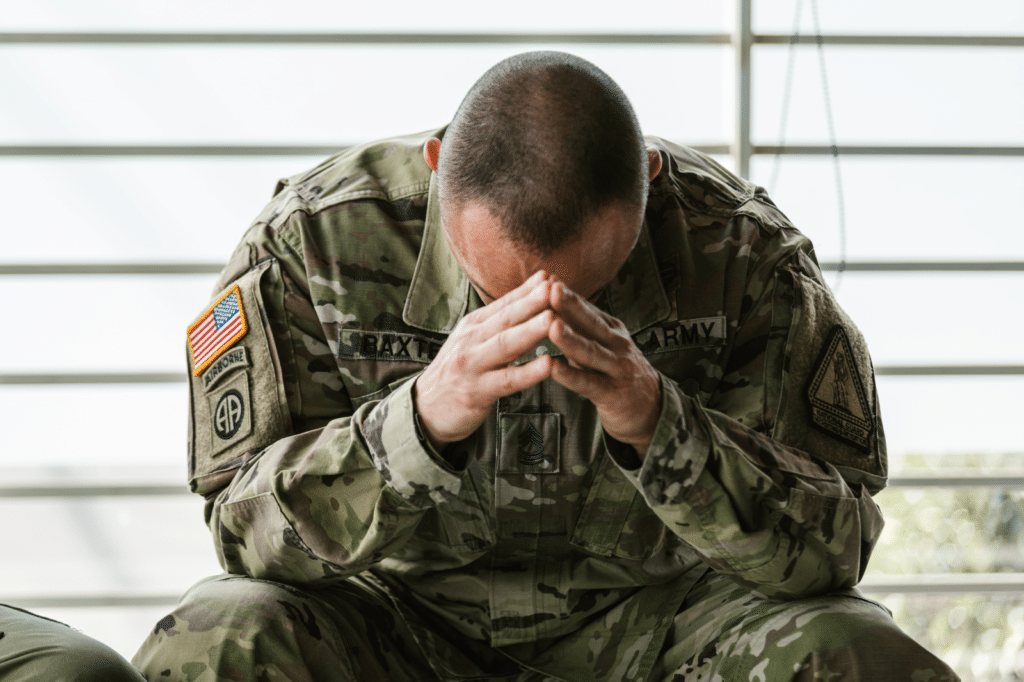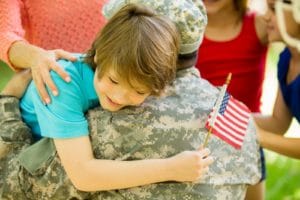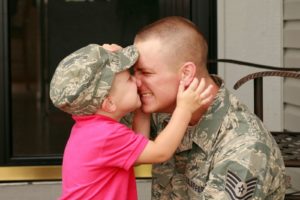Military training is designed to make service members ready to fight enemy combatants and survive very dangerous situations. These survival skills are quite important in a deployed or combat setting because there is always an elevated likelihood of danger.
Unfortunately, there is no high-level training in how to return and thrive at home with your family. Of course, you love your family and want them to stay safe. However, the extreme safety and survival measures that must be taken on deployment are not only unnecessary at home, but they can negatively impact your family’s mental health and wellbeing.
Why military survival skills don’t work at home.
There are two main reasons that military-level survival skills are unhelpful at home.
- These behaviors can cause your family to feel chronically anxious or nervous, even when they are safe. Chronic anxiety doesn’t feel good and it can set children up for a lifetime of unneeded stress. It even makes them vulnerable to developing an anxiety disorder.
- If you always are hyper-focusing on all the (highly unlikely) potentials for danger, what might you be missing out on? Your child’s joy as they sing a silly song? The warm feeling you get when your spouse hugs you? A rigid use of survival skills even in low-risk situations might leave you at arm’s length from living in the moment with your family.
Transitioning to Family Thriving Skills
Transitioning out of military survival mode doesn’t mean throwing all caution to the wind. Instead, it means practicing safety in a more flexible way, adjusting to each situation appropriately. Military survival skills are meant to be practiced in highly dangerous situations. Family thriving skills are meant to consider your family’s mental health and well-being in addition to safety. Here are a couple of examples:
Survival Skill: Extreme Vigilance
Family Thriving Skill: Use caution as needed but adjust according to the situation
In combat, survival skills include watching your back, and your battle buddy’s back, at all times. This might include scanning for weapons, looking for signs of agitation in strangers, or making sure you are close to an exit at all times. While important during combat deployments, this skill does not translate well to living with your family at home. It may even cause conflict and become a hassle to go out together as a family.
Transitioning to a family thriving skill means still practicing vigilance, but adjusting the level and kind of vigilance according to the situation. Before going somewhere, ask yourself, “What is the real likelihood and severity of danger here?” At your neighborhood playground, for example, the most likely dangers (maybe ant bites or a scraped knee?) are not very severe. Therefore, vigilance might mean keeping an eye out for big anthills, but still allowing your child to have fun on the playground.
Survival Skill: Distrust of new people or situations
Family Thriving Skill: Be open to building trust
In combat, your life is on the line and you are fighting against an enemy. Trusting another person in that situation is a big risk. At home, on the other hand, trust is not usually life or death. Instead, it might be about trusting your spouse when you share something personal or vulnerable with them. It might be about trusting a new mental health provider when you tell them about the nightmares you have been having. It might be trusting your teenage son on a short outing with new friends. Starting from a place of mistrust in these situations may keep you from living the life you want to live and getting the most out of your relationships. Instead, try starting from a place of neutrality, while being open to building trust and allowing for others to be human and make mistakes.
Survival Skill: Stoicism
Family Thriving Skill: Emotional expression with regulation
Being in survival mode often means putting emotions aside and doing what is needed to get through the event. In combat environments, there is no time to feel, process or express your emotions. Being at home with your family, on the other hand, is not filled with life or death situations. In fact, at home, emotional expression is very important. Think of sharing emotions like the “glue” that keeps family feeling close and connected. Of course, this doesn’t mean sharing all of your emotions all of the time with no boundaries. What you share and the way that you express emotions depends on the situation and family member you are sharing with. Overall, it is important to send a message that it’s safe for you and your family to feel, express, and share their emotions.
Last word
Be sure to give yourself grace as you work towards these goals. It’s not easy and it takes practice. After a month or so, if you notice yourself still struggling with staying in survival mode, you may be experiencing symptoms of anxiety or post-traumatic stress. Reach out to a mental health provider, who can assess how you are feeling and set you up with an evidence-based treatment plan to help you smooth out these bumps. It takes time and lots of practice to transition out of military survival mode, but know that in doing so, you are working hard to help your family thrive.










